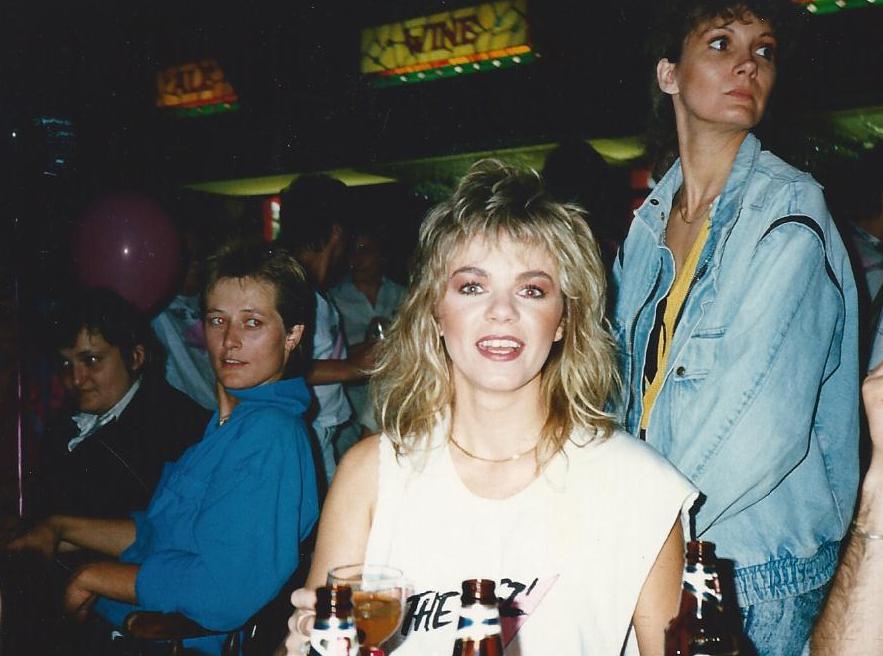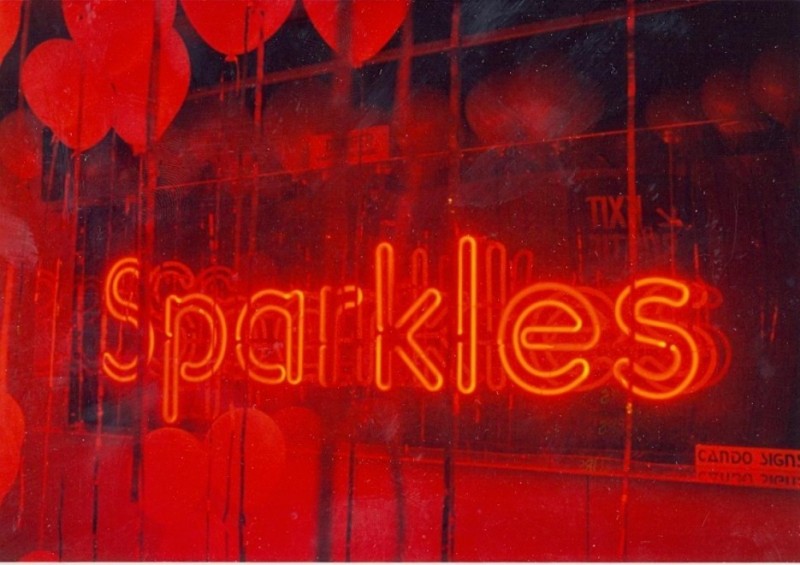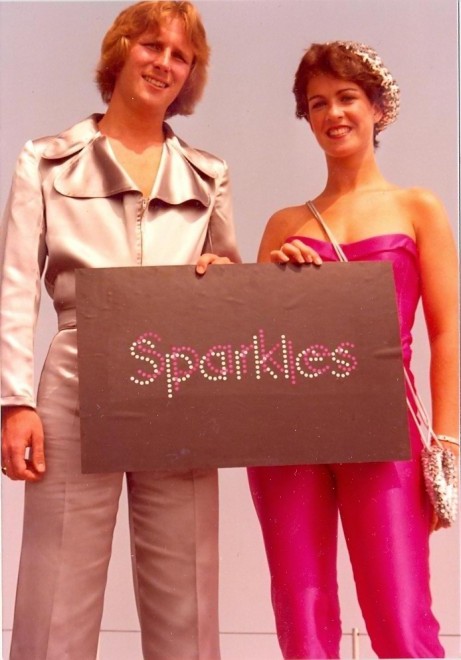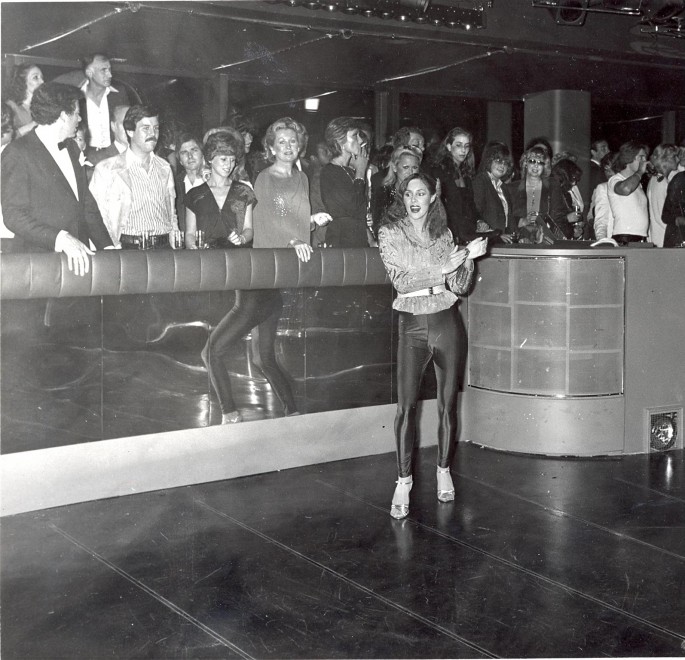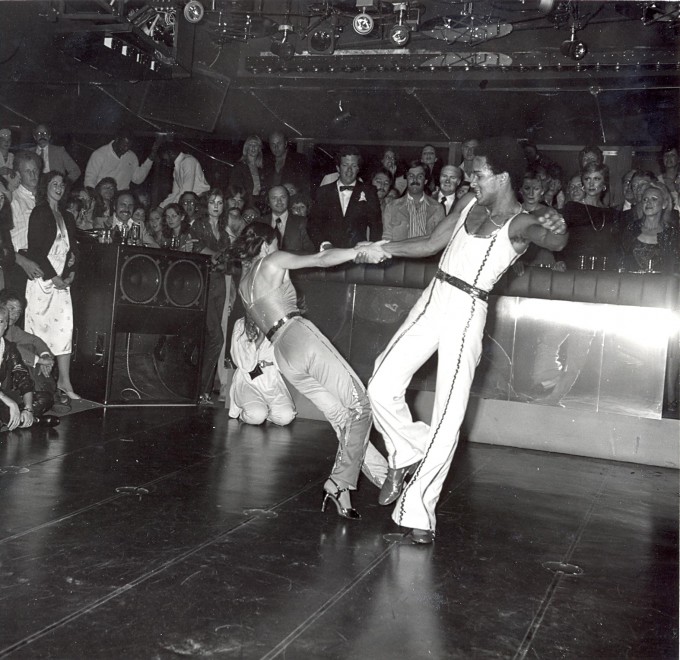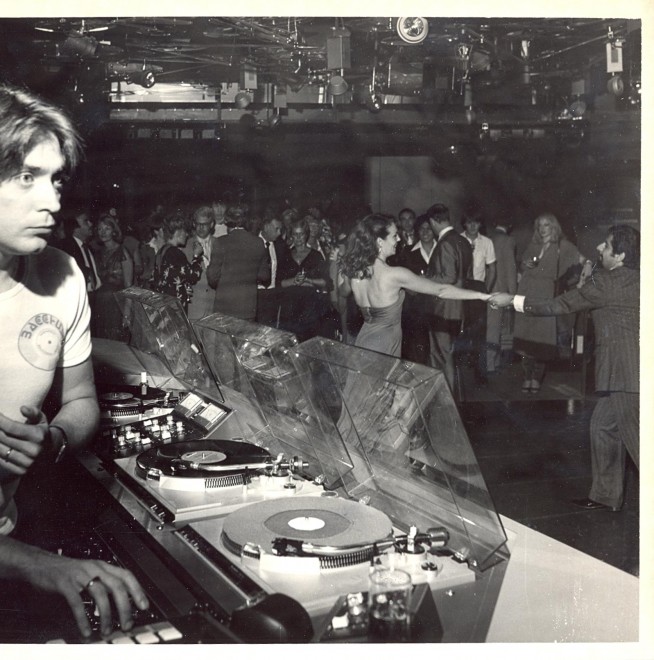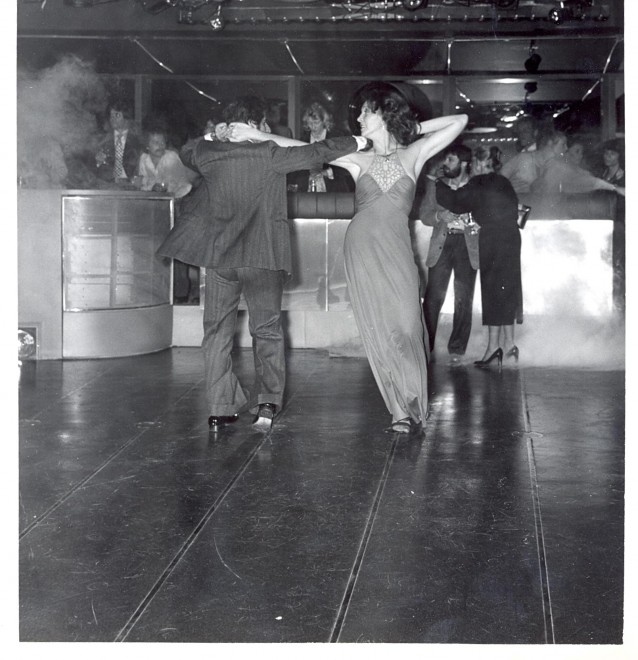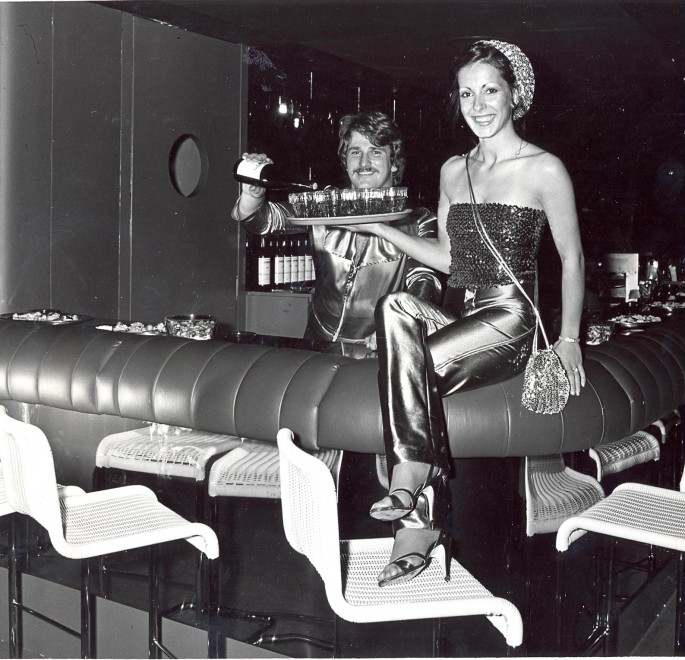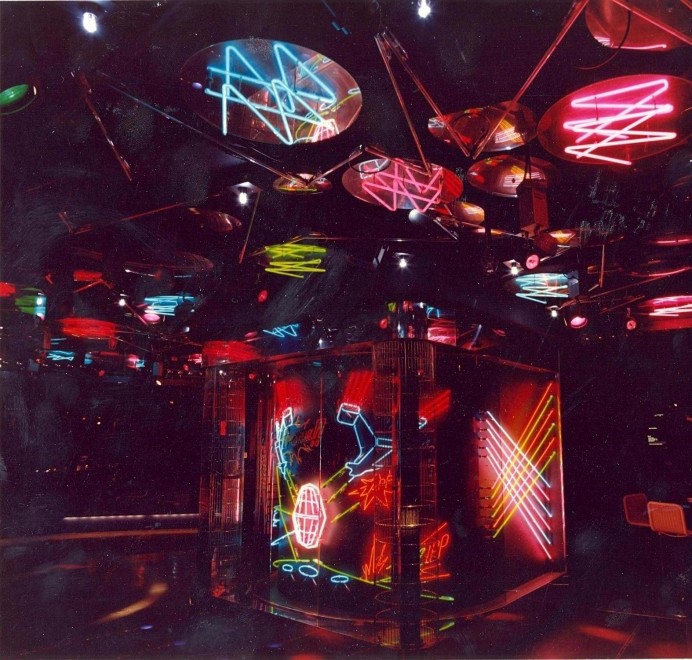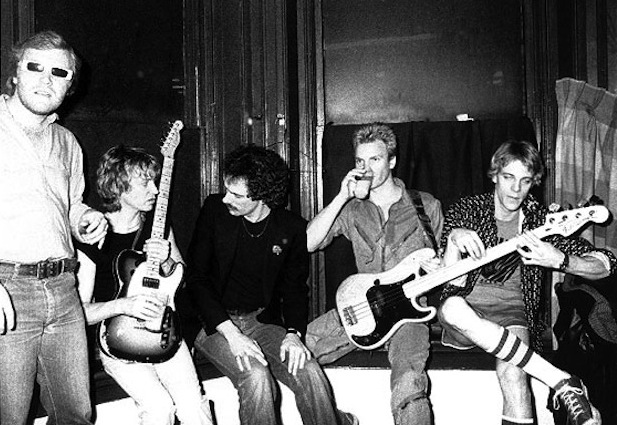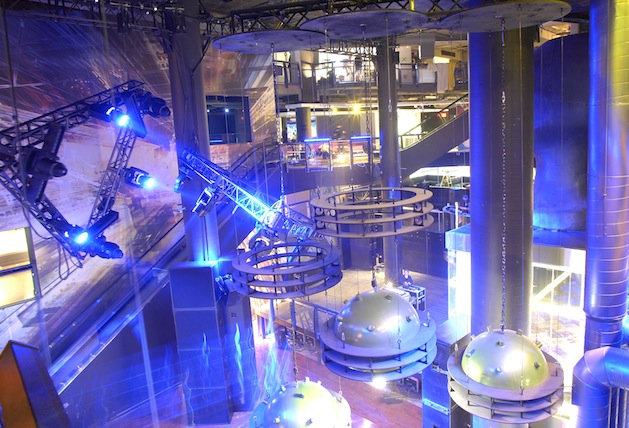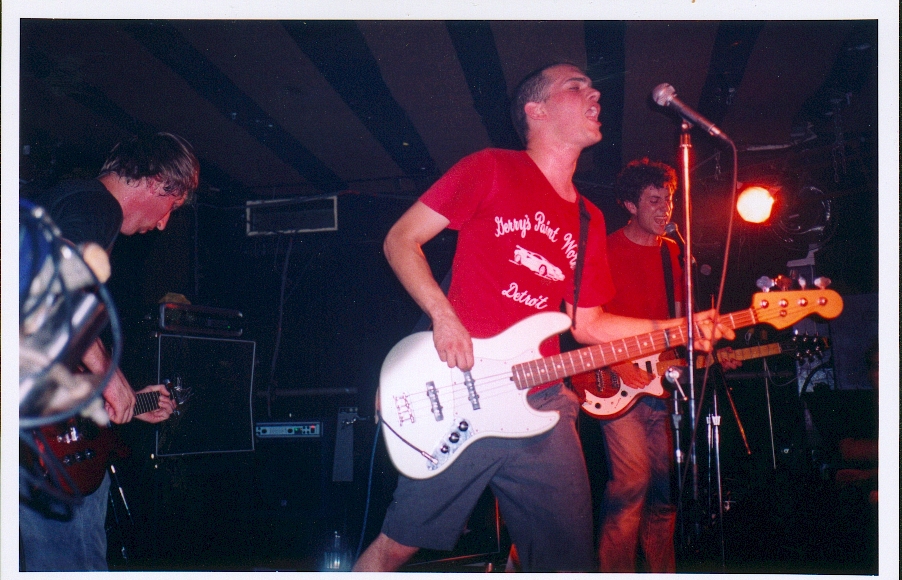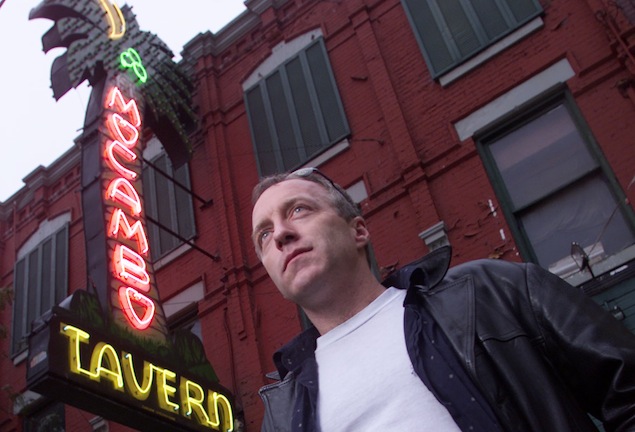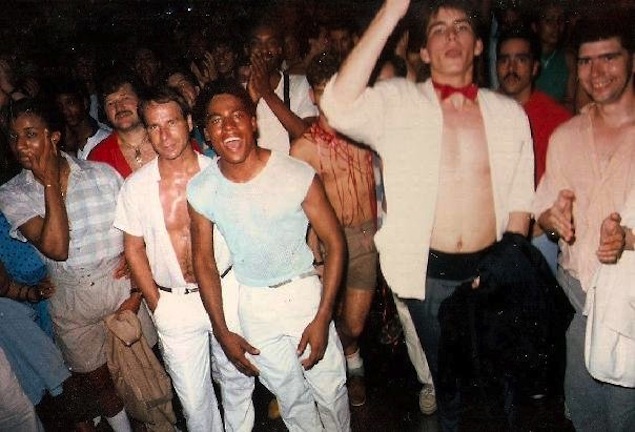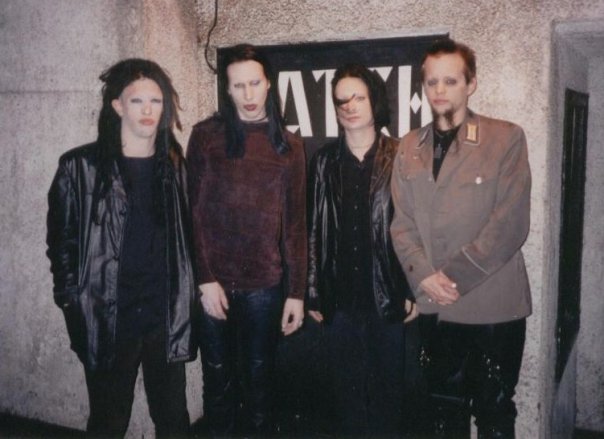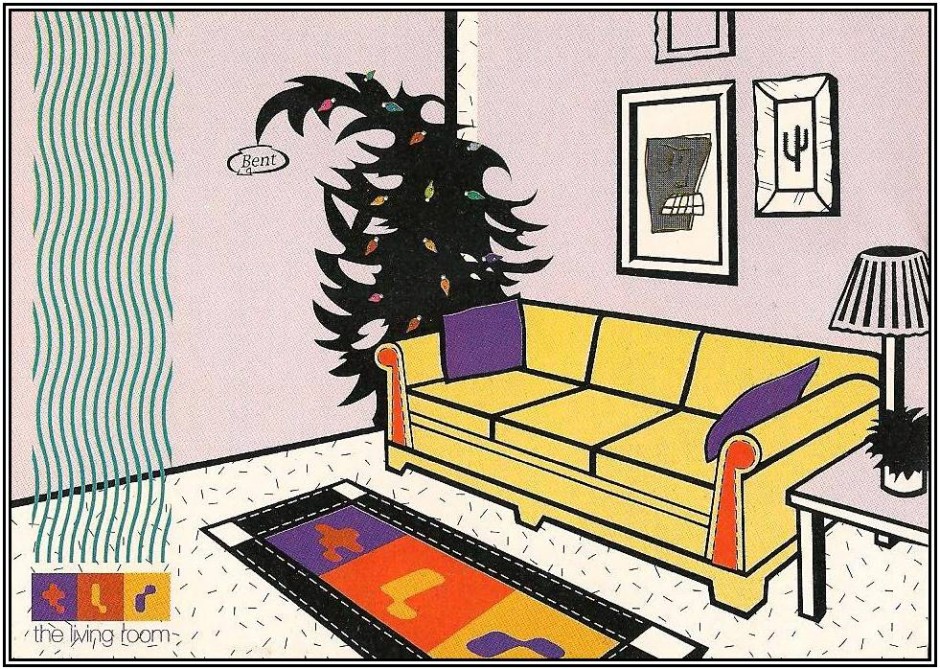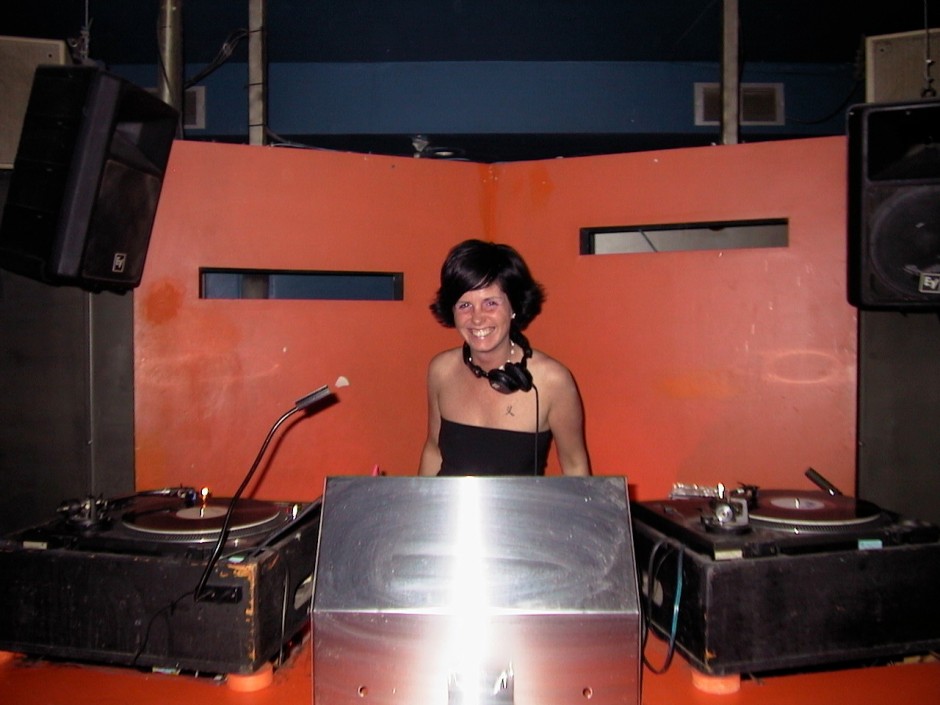DJ Dallas (centre, in Chez Moi T-shirt) and friends. Photo courtesy of Dallas Noftall.
Article originally published January 14, 2013 by The Grid online (thegridto.com).
In the 1980s, Toronto’s lesbian scene was underground—quite literally, as it was often relegated to out-of-sight basement venues. Here, Denise Benson revisits the club that changed all that.
BY: DENISE BENSON
Club: Chez Moi, 30 Hayden
Years in operation: 1984-1989
History: Though it may be difficult for younger dykes socializing in today’s Toronto to imagine, it wasn’t so long ago that queer women in this city had few options for meeting, dancing, and creating community.
From the late 1970s into the ’80s, there were occasional “Women’s Dances” (rarely was there a trendy title to be found) at venues including The Masonic Temple, The Party Centre, and The 519 Community Centre, as well as union halls, church basements and, well, basements in general. Lesbian bars were often dark, small, and far from central, although some—like The Blue Jay, Kit Kat Club, Deco’s, Fly By Night, Cameo, and The Warehouse—are still talked about lovingly in some lesbian circles. There were also mixed queer venues, like The Carriage House on Jarvis, The Quest on Yonge, and Katrina’s on St. Joseph, where gay women were very welcome.
By the time Chez Moi opened in 1984, there was a dearth of social spots for lesbians, despite the explosion of gay men’s bars on Yonge, Church, and surrounding streets. In fact, The Chez itself wasn’t even a dedicated spot for women when it first opened.

